What is the Trek to Machu Picchu challenge?
The lost Incan City of Machu Picchu is a UNESCO World Heritage site, situated in the Sacred Valley of the Inca’s in Peru. The Trek to Machu Picchu challenge follows the uncrowded Ancascocha trail, surrounded by the spectacular Andes mountains, raging rivers and remote mountain communities. Exhaustion will turn to euphoria as you step through the Sun Gate to witness Machu Picchu, one of the New Seven Wonders of the World.
Highlights include:
- Reaching the UNESCO World Heritage Site of Machu Picchu in the Sacred Valley of the Inca’s.
- Admiring the spectacular scenery of the Andes mountains (you’ll spot some alpacas and llamas too!).
- Exploring the Ancient Inca capital of Cusco.
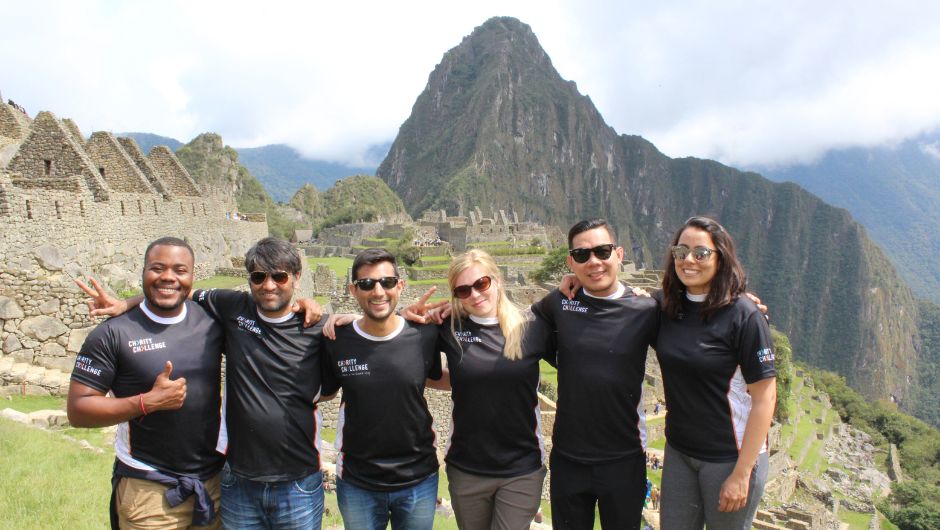
What will I achieve?
Trek to Machu Picchu is one of our most popular overseas challenges. The trek to reach the sacred Incan remains is a tough one – yet slow enough for you to acclimatise, whilst taking in the awe-inspiring landscapes and traditional Peruvian culture that surrounds you…
- When you land, you’ll already be 3,350m above sea level! So you will spend a few days in Peru’s capital of Cusco whilst you acclimatise.
- The hiking route is mountainous with several tough uphill sections. On day 4 of the trek, you’ll climb up 3000 steps towards the famous Sun Gate to witness your first views of Machu Picchu.
- You’ll spend an average of 6-8 hours trekking per day in challenging conditions, first high altitude and exposed on the high mountain passes, and then in hot and humid conditions through the jungle to reach Machu Picchu.
- This is a high-altitude trek – you’ll be hiking up to a maximum of 4600m above sea level!
- To top it all off, you will be tackling this in aid of a charity of your choice, so make sure you take in the majesty of Machu Picchu – you’ve earned it.
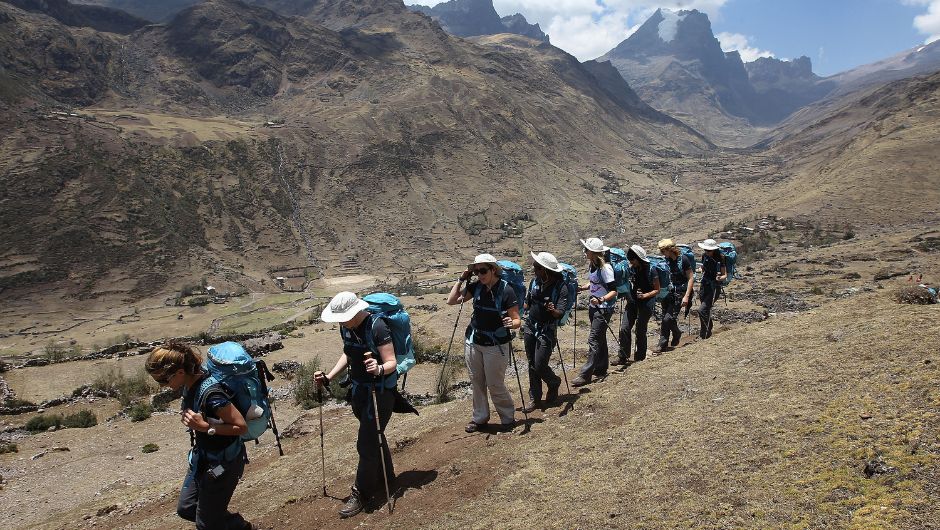
I’m thinking of booking, what do I need to know?
For a quick overview of what to expect from Trek to Machu Picchu, we’ve pulled together some need-to-know essentials and top tips! For further information please visit our Trek to Machu Picchu webpage, which covers all information and details thoroughly.
1. Pack for the Climate
In the Andes, the average temperature throughout the year goes from around 8.5°C (June to August) to around 10.8°C (September to May). The temperature can vary up to 15º from day to night-time, especially at higher altitudes during the challenge.
Temperatures can go below freezing at night whilst camping but during the day, you’ll be relatively warm. You can also expect rain, hot sunshine, humid jungle conditions and dry, cold high-altitude conditions – so preparing and packing right is key!
Some top recommendations are well-worn in waterproof boots that will support your ankle over the varied terrain. Quality hiking socks are also a must – pack enough pairs to keep your feet dry each day and help prevent any blisters! A synthetic or feather down jacket is great for chilly mornings and evenings too, without taking up too much daypack space.
You can view a full kit list on our website. Please pay particular attention to the items marked as essential. In your account area (once you have booked on) you will get access to a whole range of discounts and benefits from a range of outdoors suppliers – and can also rent certain items if you prefer.
Top Tips:
- To ensure a restful nights camp, pack some lightweight thermal layers. Make sure your sleeping bag is a 3-4 season too!
- Opt for technical ‘wicking’ t-shirts instead of cotton ones, as these will dry faster and help keep you cool and comfortable whilst hiking.
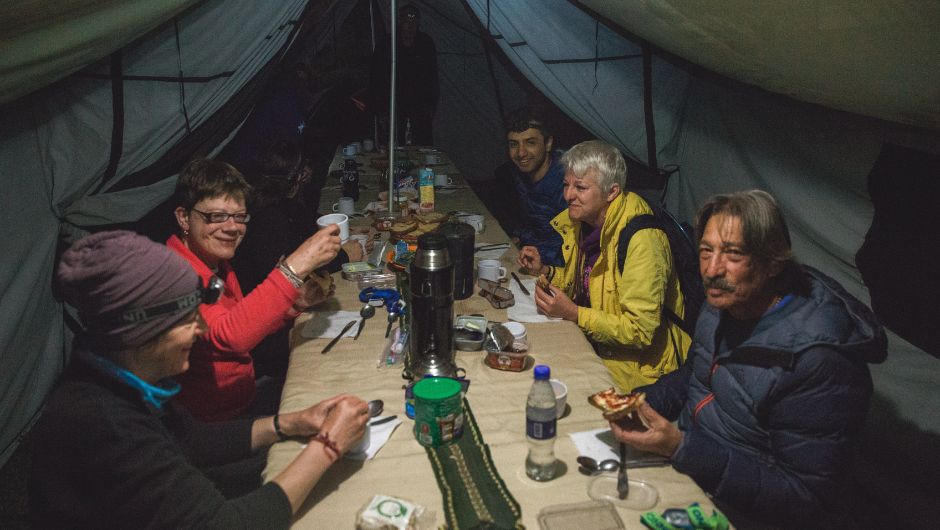
2. Prepare for Altitude Struggles
On this high altitude challenge you’ll reach impressive heights of up to 4,600m above sea level! Our itinerary allows you time to acclimatise for a few days in Cusco but you should still prepare as best you can for hiking in high altitude conditions. Remember, altitude sickness can affect anyone, even those with good fitness levels.
During exercise at high altitude, your fluid intake needs to dramatically increase – hydration is vital and will help you to acclimatise. Always carry a water bottle with you and ensure you refill with the water provided before setting off each day. Rehydration tablets are always good to use, as they’ll help you maintain a healthy balance of electrolytes—like sodium, potassium, and magnesium—which are essential to keeping your body hydrated.
A medic will be accompanying your group on this trek and will be on hand to provide medical support and advice if you do start to feel unwell.
Top Tips:
- Try to practise breathing through your nose whilst hiking. The air at high altitudes is dry – and breathing through your mouth can lead to a dry cough (sucking on some cough sweets can help a dry throat too!).
- Only use rehydrations tablets in your water bottle, not your water bladder – as they can cause them to go mouldy.
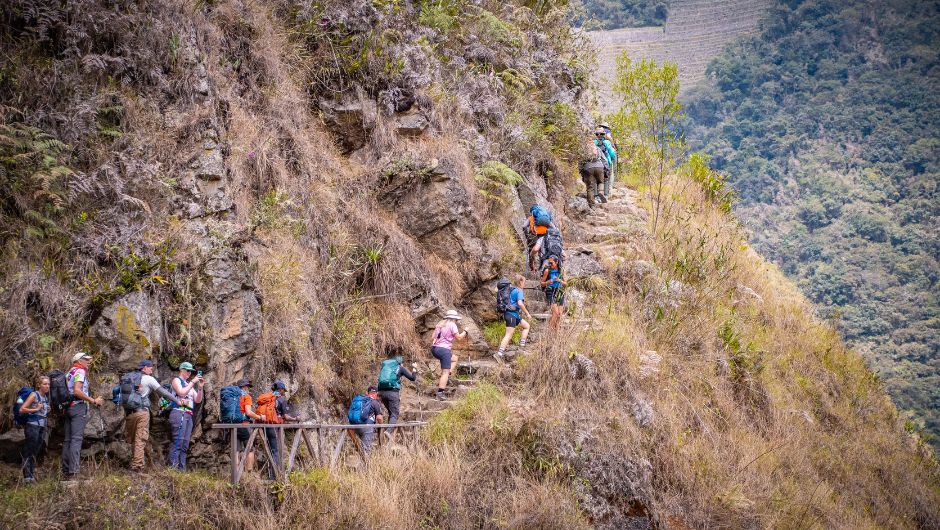
3. Endurance Train
This 10-day trip involves 4 days of intense back-to-back hiking (6-8 hours), so endurance training is the key to getting the most out of this spectacular hike.
We recommend you begin training at least three to four months before your departure date (and we provide some training programmes in your account area once you book). Strength is important but endurance should be your focus. Walking up hills and stairs will help condition your lower body muscles – but remember to start slowly and without any pack weight. Eventually, you can introduce walking with the weight of a pack and gradually lead up to long hikes of 6-8 hours that include hills or mountains.
Top Tips:
- When in the final stages of your training, weigh your pack down with full water bottles/bladders – but pour out the water before your descent to minimise knee stress!
- Train with your walking poles to help reduce stress impact on your knees.
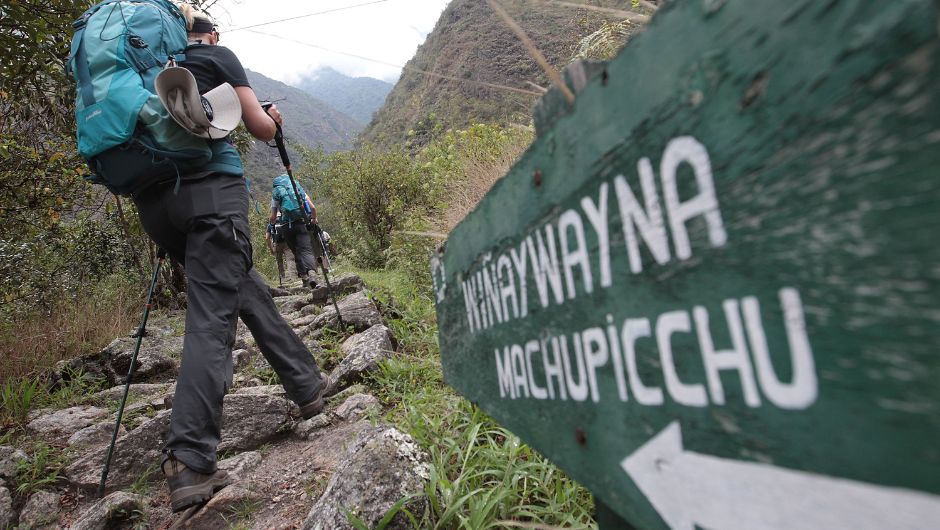
To conclude… start preparing!
If you are now seriously considering taking on the Trek to Machu Picchu challenge, we strongly recommend heading over to our website to read through our full Itinerary, Costs, Kit List and extensive Essential Information tabs.
You’ll find everything you need to know here in detail, from timings, locations, accommodation, food and drink, difficulty level breakdowns, training advice, group safety, equipment and much, much more (including answers to those all-important ‘what if?’ questions).
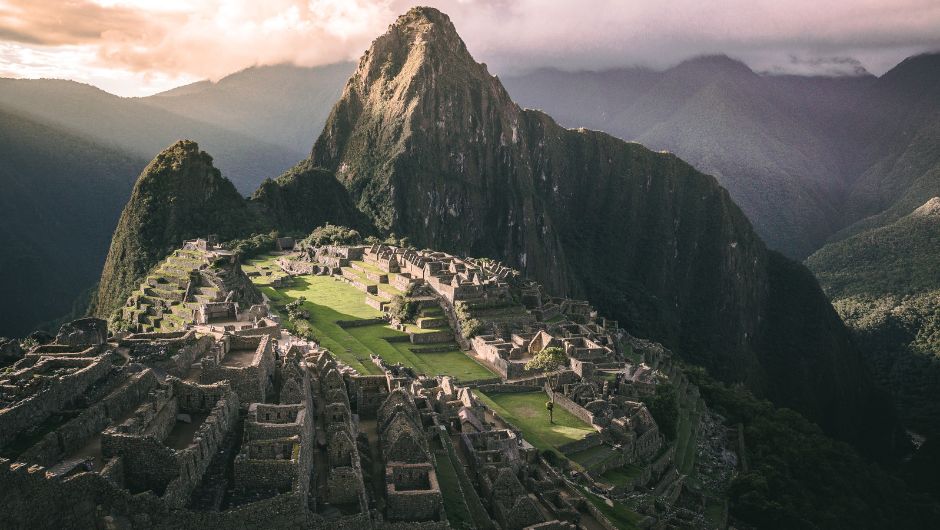
Why should I book the Trek to Machu Picchu with Charity Challenge?
Over the years Charity Challenge has built up a wealth of experience that has enabled us to create the best Trek to Machu Picchu itinerary that aims to help acclimatise the group and complete impressive multi-day hikes, whilst allowing time to take in the breath-taking scenery of Peru.
Since 1999, we have specialised in operating challenges for charity fundraisers. We partner with thousands of UK and Irish charities already – and our team is happy to reach out to a charity of your choice to make your dream fundraising challenge happen. (Or, if you don’t fancy fundraising, the good news is you can simply self-fund and join us for the adventure of a lifetime anyway!).
- The Trek to Machu Picchu has consistently been one of our top challenges for more than 25 years.
- It includes incredible mountain scenery, indigenous communities, history, culture, religion, architecture and archaeology, and the jewel in the crown is a tour of Machu Picchu to celebrate the culmination of your trek.
- Our itinerary is designed to help you acclimatise, meaning you have a few days to relax and explore Cusco before the physical trekking challenge really begins!
- We employ a medic to accompany the group throughout the trekking part of the challenge, to provide medical support and advice if needed.
- We know how precious memories are, so our itinerary allows you time to take in the awe-inspiring surroundings (and to capture them by camera).
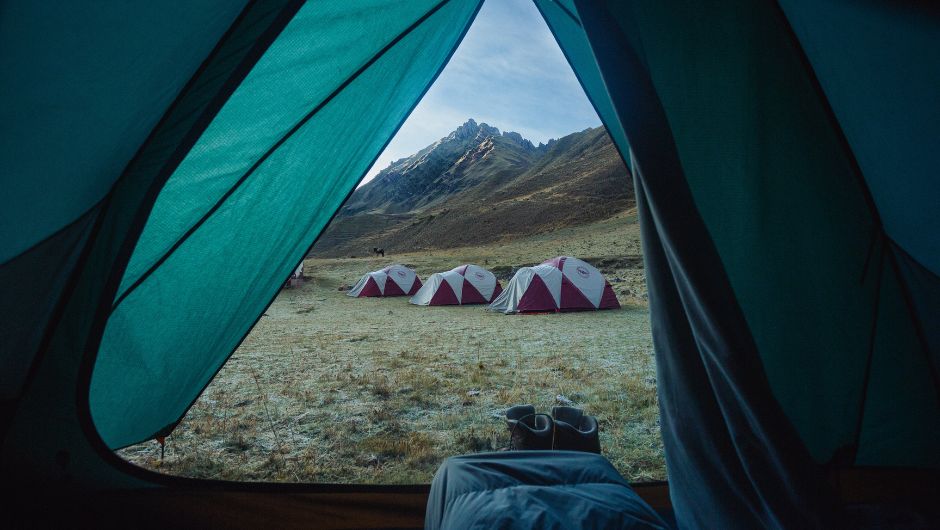
Remember, the Trek to Machu Picchu is graded as a ‘tough trek’, testing your body with high altitude and mountainous conditions. With the right preparation, this expedition is incredibly rewarding to complete and highly memorable – making it an excellent choice for an overseas charity fundraising challenge!


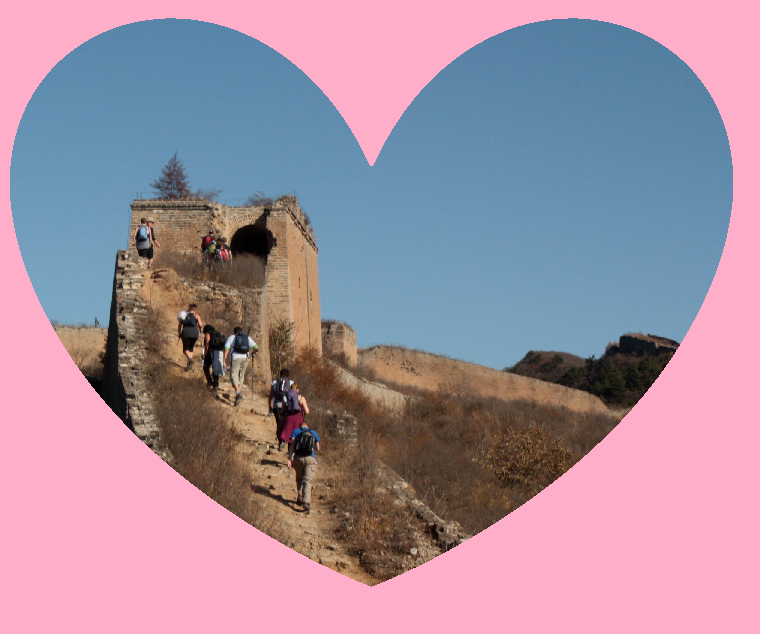
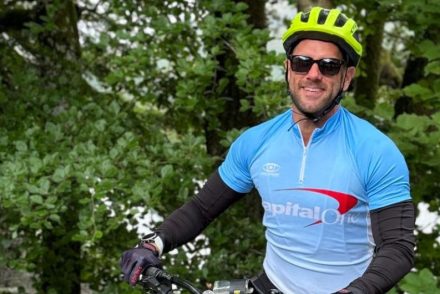
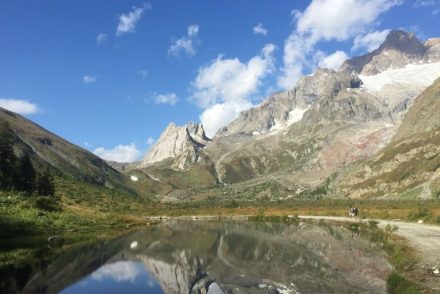

No Comments